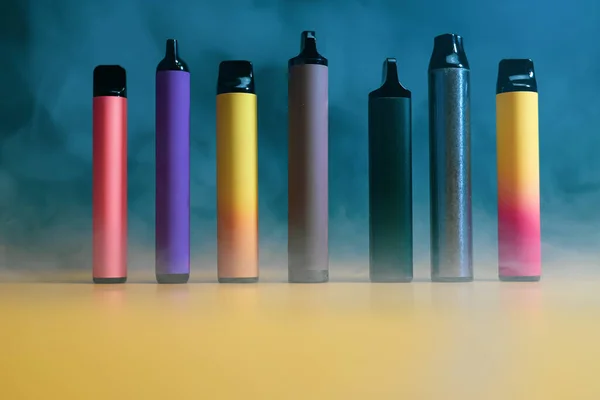The rise of vaping has brought a surge in disposable vape pens. Disposable products have an ecological footprint as more people vape as an alternative to traditional smoking. To understand the environmental impact of disposable vape pens, we first need to look at their components. These devices typically consist of:
- A plastic or metal outer casing
- A battery
- An e-liquid reservoir
- A heating element
- Various electronic components
Each of these parts plays a role in the overall environmental impact of the device, from production to disposal.
Production and resource consumption
Manufacturing disposable vape pens requires significant resources. Metal extraction and processing in batteries and other components also have environmental consequences, including habitat destruction and pollution. E-liquid production uses a variety of chemicals, some of which may have environmental implications if not handled properly. The energy consumed in the production process further adds to the carbon footprint of these devices.

Single-use nature and waste generation
One of the most significant environmental concerns surrounding disposable vape pens is their single-use nature. Unlike rechargeable vaping devices, disposable pens are designed to be discarded after the e-liquid is depleted or the battery dies. This leads to a continuous cycle of production and disposal, generating substantial waste. The components of these devices, particularly batteries and electronic parts, can be challenging to recycle. Many users throw their used vape pens in the trash, ending up in landfills.
Alternatives and potential solutions
While the environmental impact of disposable vape pens is concerning, there are potential solutions and alternatives to consider:
- Rechargeable devices – Encouraging rechargeable vaping devices can significantly reduce waste generation and resource consumption.
- Improved recycling programs – Developing and implementing comprehensive recycling programs specifically for vaping devices could help recover valuable materials and reduce environmental harm.
- Eco-friendly materials – Exploring using biodegradable or more easily recyclable materials to produce vape pens could mitigate some environmental concerns.
- Extended producer responsibility – Implementing policies that hold manufacturers responsible for the entire lifecycle of their products, including disposal, could incentivize more sustainable design and production practices.
- Consumer education – Raising awareness about the environmental impact of disposable vape pens and proper disposal methods can encourage more responsible consumption and disposal behaviors.
Innovation’s role
Innovation in the vaping industry could play a crucial role in addressing environmental concerns. Some manufacturers are exploring more sustainable options, such as devices with replaceable components or those made from more environmentally friendly materials. The M Bar 9K represents a step towards more durable and efficient vaping technology. This could reduce the overall ecological impact compared to traditional disposable pens.
Balancing convenience and sustainability
Disposable vape pens are popular because of their convenience. Consumers play a vital role in driving change. By making informed choices and demanding more sustainable options, they can influence manufacturers to prioritize environmentally friendly practices and products.
Conclusion
Manufacturers, consumers, and policymakers must pay attention to the environmental impact of disposable vape pens. While these devices offer convenience, their single-use nature and difficult-to-recycle components pose significant ecological challenges. As the vaping industry evolves, it’s crucial to prioritize sustainability alongside performance and convenience. By considering the full lifecycle of vaping products and working towards more environmentally friendly alternatives, we can help mitigate the ecological impact of this growing industry. Vaping should focus on user experience and minimizing its footprint on our planet.









